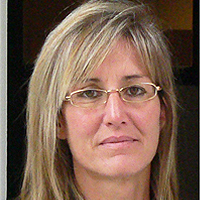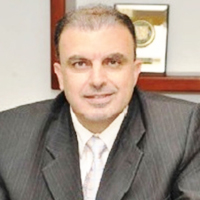An analysis of wild animals with respect to French Ethics and Law
Published on: 9th May, 2019
OCLC Number/Unique Identifier: 8163878958
Before discussing the crux of the matter, it is important to understand what “wild” signifies and the characteristics that define a wild animal.
As contrasted to domesticated animals, a wild animal can be defined as an animal living freely in his natural habitat, independently of Man. These animals are only exposed to variations in the biological equilibrium, to the imperatives of their genetic program and live in a habitat that gives them the possibility of expressing it themselves.
However, this definition is very narrow as there exist a number of species of wild animals that don’t live freely in their natural habitat. These animals are constrained by Man, who by creating a relationship of dependence, controls them and in turn becomes responsible for their sustenance. In such a situation, their habitat is no more their natural habitat but than which has been imposed on them by Man; such animals are said to be “held in captivity” or even “tamed”.
In short, when talking about law and ethics related to wild animals, there are two things to be taken into account: wild animals that live in the wild and wild animals that live held in captivity by Man.
Quantification of the pressures generated during insertion of an epidural needle in labouring women of varying body mass indices
Published on: 1st December, 2017
OCLC Number/Unique Identifier: 7317597133
Objective: The primary aim of this study was to measure pressure generated on a Tuohy needle during the epidural procedure in labouring women of varying body mass indices (BMI) with a view of utilising the data for the future development of a high fidelity epidural simulator. High-fidelity epidural simulators have a role in improving training and safety but current simulators lack a realistic experience and can be improved.
Methods: This study was approved by the National Research Ethics Service Committee South Central, Portsmouth (REC reference 11/SC/0196). After informed consent epidural needle insertion pressure was measured using a Portex 16-gauge Tuohy needle, loss-of-resistance syringe, a three-way tap, pressure transducer and a custom-designed wireless transmitter. This was performed in four groups of labouring women, stratified according to BMI kg/m2: 18-24.9; 25-34.9; 35-44.9 and >=45. One-way ANOVA was used to compare difference in needle insertion pressure between the BMI groups. A paired t-test was performed between BMI group 18-24.9 and the three other BMI groups. Ultrasound images of the lumbar spine were undertaken prior to the epidural procedure and lumbar magnetic resonance imaging (MRI) was performed within 72h post-delivery. These images will be used in the development of a high fidelity epidural simulator.
Results: The mean epidural needle insertion pressure of labouring women with BMI 18-24.9 was 461mmHg; BMI 25-34.9 was 430mmHg; BMI 35-44.9 was 415mmHg and BMI >=45 was 376mmHg, (p=0.52).
Conclusion: Although statistically insignificant, the study did show a decreasing trend of epidural insertion pressure with increasing body mass indices.
Correlation between the presence of maternal gestational or pre-gestational pathologies and hearing impairment in the puerperal period
Published on: 22nd November, 2019
OCLC Number/Unique Identifier: 8444358678
Objective: To evaluate whether the occurrence of maternal pathologies, mainly Diabetes Mellitus and Hypertensive Syndromes in the gestational or pre-gestational period may be related to hearing impairment in postpartum women.
Methods: Observational, prospective study including 361 puerperal women who had their deliveries at a reference University Hospital for pregnant women with clinical history of risk. Auditory evaluation was performed by Distortion Product Otoaccoustic Emissions (DPOAE) within 14 days after delivery. Measures of central tendency and absolute and relative frequencies were used to describe the sample and the chi-square test and binary logistic regression to assess the correlation among variables. Significance higher than 95% was observed and the study was approved by the Research Ethics Committee.
Results: A total of 361 postpartum women were studied and 7.5% had hearing impairment. The frequency of gestational hypertension was 13.9%, that of gestational diabetes was 8.6% and that of pre-pregnancy diabetes mellitus was 5.8%. The presence of hearing impairment was significantly correlated with the occurrence of pre-pregnancy diabetes mellitus (OR: 4.5 - CI: 1.51-1.47), and maternal age greater than 29 years (OR: 3.72 - 1, 58-8.76); A correlation was also found between maternal age and the presence of pre-pregnancy diabetes mellitus (OR: 3.84 - CI: 1.45-10.15).
Conclusion: In the population of postpartum women evaluated, having Diabetes Mellitus prior to pregnancy and belonging to the age group older than 29 years increases the chance of having hearing loss.
Medical bioethics vs. Medical ethics*
Published on: 21st September, 2018
OCLC Number/Unique Identifier: 7900081462
The current situation of bioethics illustrates what has become known as “the anthropological halt”, described with great lucidity by C. S. Lewis in his book The Abolition of Man as the neglect of the “Tao”, a not very extensive body of basic axioms which enable the overall integrity of reason, both in theory and practice. One of these principles, visible to everyone and which provide the cornerstones of the Judeo-Christian tradition, is the sanctity of human life.
Code of ethics and code of practice: Two relevant documents for an effective and secure operation of tissue establishments
Published on: 19th August, 2022
Tissue banking is an interdisciplinary medical practice more reliant than others in specialized fields and applying knowledge from other branches of science, particularly nuclear sciences. A further difference from other medical disciplines is the urgent necessity to include laws, norms, standards and statutory regulations, which differ in their juridical binding force. Adopting a code of ethics and a code of practice is one of the main tasks to be conducted by a tissue establishment after its founding. The aim is to include in these codes the main ethical principles associated with the different laws, norms, standards, and statutory regulations in force in each country in the field of tissue banking.
Healthcare Bioethics: A Vital Branch of Bioethics and a New Possible Pillar for Modern Healthcare Systems Strengthening Worldwide
Published on: 5th September, 2023
Globally, all people deserve the highest level of respect for their dignity, rights, and health. Bioethics has been recognized as a powerful discipline that aims to ensure such respect. Fritz Jar (1895–1953) and Van Rensselar Potter (1911–2001) will remain heroic men who ushered in the existence of the discipline of bioethics. Bioethics has been recognized as the science of survival and a bridge to the future. Thus, bioethics aims to enrich people’s wisdom. Wisdom is the knowledge of how to use knowledge for human survival and improvement in the quality of life. Worldwide, all people must widely possess such knowledge. Unfortunately, after many years of existence, implementing the principles and goals of bioethics remains centralized and confined to academic fields. Due to its centralized status, few branches of bioethics have been recognized. Besides, both pre-standard and standard practices still exist in the field of bioethics. Healthcare bioethical principles have been mentioned in numerous publications. However, healthcare bioethics has not been recognized as a vital branch of bioethics. The lack of well-established healthcare bioethics hinders strategies for eradicating many of the ephemeral and heuristic approaches that are still obstructing the achievement of optimum health status for numerous people worldwide. Integrating bioethical principles in all healthcare sectors in decentralized manners would lead to the existence of healthcare bioethics. The purpose of this manuscript is to describe healthcare bioethics as a vital branch of bioethics with respect to its description, branches, core principles, functions, system components, and pre-standard and standard practices of healthcare bioethics.
Medical Ethical Issues, an Islamic Perspective
Published on: 8th February, 2024
Morality is a unique human subject. It is affected by a number of cultural factors, such as history, tradition, education, and religious beliefs. Ethics is based on two basic concepts: one is a "value" and the other is the duties "must". In the Islamic faith Health and illness as life and death are not mere facts, they include many values that must be respected. The disease, for example, is not only a medical scientific fact like other physiological phenomena. Despite the rise of secular people most of the arabs are believers and religion remains a significant force in society. Diseases and physical suffering have a big impact on the Muslim's life. It tests endurance, faith, and submission to one almighty God, who has healing powers for all patients. How staff ‘does’ good medical ethics depends on this perspective. To understand the Islamic contribution to medical ethics, five topics are discussed; first, obeying. God's commandments; second, categorising of commandments; third, the 5 guiding principles of Islamic Law (maqased); fourth, judging actions by intention and fifth, refers to a warrant belief in the divine decree and the predestination. In many Western countries multi-cultures and multi-religious textures are met including Muslim citizens and new immigrants. Medical Staff will be required at one point during their work to treat these Muslim patients; therefore, a minimum level of cultural awareness is a prerequisite for the delivery of care that is culturally sensitive. In this paper, there is the highlight of certain key teachings in Islamic medical issues and their applications. Hopefully, the insights gained will aid medical staff to better understand their Muslim patients and deliver care that pays due respect to their beliefs.Muslims in the U.S. and in Europe come from diverse backgrounds. Understanding their beliefs and observances is crucial for providing culturally competent care. In bringing any religious perspective to bear on medico-moral issues, a willingness to listen and courtesy in the debate is necessary.
Smart Cities and Aging Well: Exploring the Links between Technological Models and Social Models for Promoting Daily Social Interaction for Geriatric Care
Published on: 19th March, 2024
The aging global population requires a new social model to meet the growing social, economic, and physical needs of seniors. Western social models need to be reconsidered in light of examples that support communal ways of living, which are sustainable through smart city design for more supportive geriatric care systems. To address the complex problems of geriatric care in this growing aging population with specific needs related to increased lifespan and limited financial resources, the use of emerging technologies, such as artificial intelligence (AI) and the Internet of Things (IoT), should be considered. As retirement ages rise and funds for retirement continue to decrease automated and sustainable solutions need to be sought. The ethical need to consider citizens not as customers but as decision-makers and to validate the ethical nature of medical decisions made for and by individuals should also be prioritized. This study provides recommendations for a smart city design and highlights the need for reflection on the ethics, modernization, and management of geriatric care. It suggests that technological devices can benefit health system reform by facilitating problem-solving. Overall, this new model integrates communal living and non-Western values with emerging technologies to address the growing need for geriatric care and the well-being of seniors.
Prospective Community-based Study of Still Births in Remote Villages with Low Resources
Published on: 13th June, 2024
Background: Stillbirth (SB), either because of intrauterine or intrapartum fetal death, is amongst the most devastating pregnancy complications, hardest to predict, real challenge for health systems. India probably accounts for the highest SB numbers in the world.Objectives: A community-based prospective study was carried out to know the burden, and causes of SBs in rural women of remote region.Material methods: After approval of the ethics committee of the Institute in Maharashtra for broader research, which was service-oriented, the present study was conducted in 100 villages around the village with health facilities. These villages were included keeping in mind future services. After obtaining the consent of women, information was prospectively recorded on their predesigned tool (which was for broader work), by asking women and seeing their records of antenatal and intranatal care on a regular basis. The study subjects were selected after obtaining information from nurse midwives, Accredited Social Health Activists (ASHAs), and Aaganwadi workers. As the plan was to serve, there was excellent cooperation. The tool was made for broader work. Villages were visited 5 days a week. Study was community-based in villages in remote, hilly region with various local issues so any information the women gave conclusion and was in the record was used.Results: A total of 3905 births occurred over two years, 3635 (93%) term, and 270 (7%) preterm. Amongst 3635 term births, 3474 (95.6%) were live births, 161 (4.4%) SBs, amongst 270 preterm births, 239 (88.5%) were live births, 31 (11.5%) SBs. Of 192 SBs, 48 (7.2%) SBs were amongst 2690 women with anaemia, (16 (2.4%) SBs amongst women with very severe anaemia, 12 (1.8%) SBs were amongst 667 women with severe anaemia, 12 (1.8%) SBs were amongst 664 women with moderate anaemia, 8 (1.2%) SBs were amongst 680 women with mild anaemia). Overall of 192 (4.9%) SBs, 31 (18.1%) SBs were among 517 women with hypertensive disorders of pregnancy (HDsP) 8 (4.4%) SBs amongst 280 women with moderate HDsP, 12 (6.9%) SBs amongst 175 women with severe HDsP, 11 (6.8%) SBs in 62 women with eclampsia. Overall of 192 SBs, 6 (3.1%) babies had weight < 1 kg, 8 (4.1%) of ≥ 1 to < 1.5 kg, 50 (26.0%) ≥ 1.5 to < 2 kg, 64 (33.3%) ≥ 2 to < 2.5 kg, 64 (33.3%) 2.5 kg and more, obviously fewer babies more deaths in birth weight less than 1. 5 kg, more so less than 1 kg.Conclusion: Overall SBs were in women with disorders but 4.5% SBs did occur in women with no disorder. SBs were significantly higher amongst babies weighing less than 1 kg, beyond this weight, numbers were similar.




